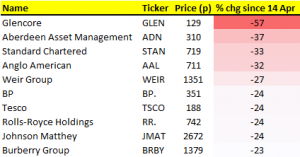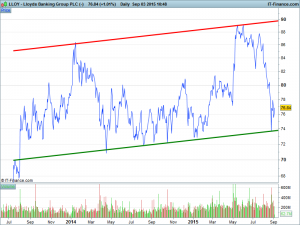Why the circa 1000pt drop?
As the world’s 2nd largest economy, China’s economic strength not only reflects the economic confidence of the Asia-Pacific region in general, but that of the whole world as well. It’s been the biggest market in the world for commodities for some years, fuelling a huge commodities boom that now appears to be subsiding along with the Chinese economy itself. Not only has this cultivated fears of a slowdown in demand for basic materials which has put pressure on the mining sector that contributes so heavily to the UK 100 , it’s cast doubts as to how far we can actually trust the data coming out of China as attention remains fixed on its ‘exotic’ stock market rather than its economy.
The fact is that some very big names in business (including the boss of mining behemoth BHP Billiton (BLT)) have recently come out flying the flag for China. This all points to an emphasis on fear rather than what’s actually going on in China.








